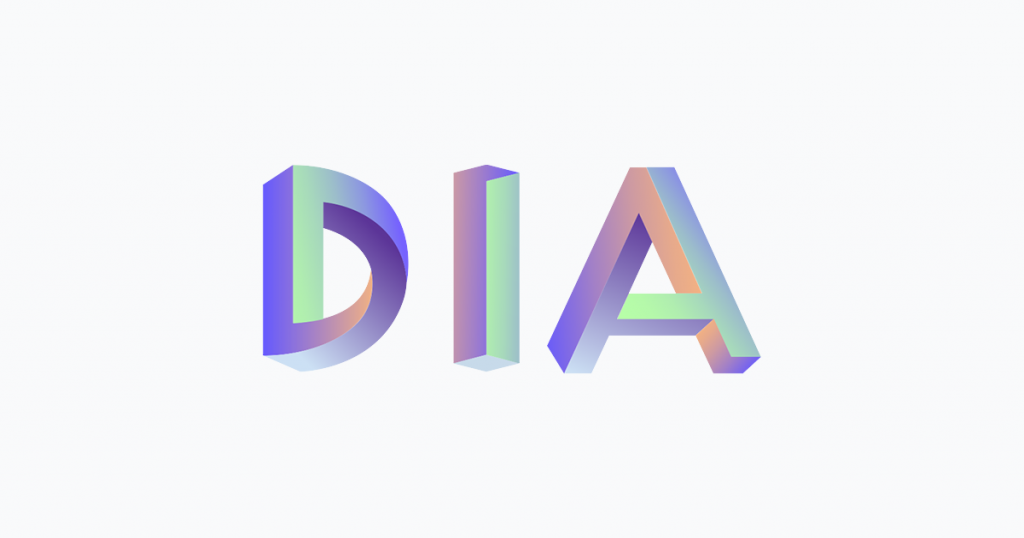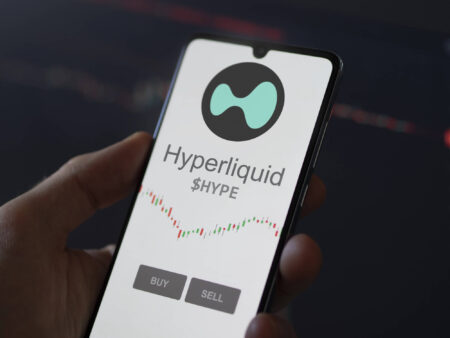Oracles are building blocks that allow different blockchains to communicate with eachother and real world data. They play a central part in the current crypto ecosystem and are integrated in almost all protocols. An overview of the oracle project DIA in an interview with president Michael Weber.
DIA (Decentralised Information Asset) is an open-source, financial information platform that leverages crypto economic incentives to source and validate data and oracles. The platform provides the infrastructure for market actors to supply, validate, use and share financial data.
DIA's data sources and methodologies are transparent and publicly accessible for everyone. This will create a level playing field and break down barriers to entry for both the traditional and decentralised financial markets. Founded in 2018 as a Swiss-based non-profit association, DIA’s mission is to democratise access to financial data, similar to what Wikipedia has done in the broader information space with regard to central encyclopaedias.
A conversation with Michael Weber, president of the oracle project DIA, on challenges and the future of decentralised finance (DeFi).
CVJ.CH: The DeFi space is getting a lot of traction at the moment, what are your thoughts on the recent developments?
Michael Weber: The DeFi space is growing at a tremendous speed. Since the start of the year 2021 we saw an increase of the DeFi market capitalisation by 500%, increasing from $22m on January 1 to $140M in the beginning of May.
There are lots of very interesting new tools and projects coming out every week, new layer 1 and layer 2 blockchains growing, and many solutions offering new opportunities and solving existing pain points. We are also seeing a lot of interest coming from the mainstream media, institutional investors and even public faces talking about Decentralized Finance (DeFi).
Though early and innovative work, we are very well positioned in this disruptive ecosystem. Since every DeFi project is dependent on accurate data and oracles to function, we believe DIA delivers one of the broadest sets of data feeds and one of the most competitive infrastructures in the market.
What role does DIA play in the current crypto ecosystem?
DIA is an open-source data and oracle provider. To understand the importance of these oracles, it is worth taking a step back and understanding how a blockchain works. Blockchains are powerful networks that enable smart contracts, which can automatically perform transactions when certain conditions are met.
But Blockchains are closed networks, natively only accessing internal data of the network to execute these smart contracts. That’s where oracles come into play. Oracles provide data from outside of the network to smart contracts. Oracles allow smart contracts to access data from the off-chain world and expand their capabilities. It is a bridge between off-chain and on-chain systems.
Most decentralised applications (dApps), for instance the ones built on the Ethereum network, require price data points to execute their products. Without this price information, they can not execute transactions.
What makes DIA different from competitors in the space?
Our approach on how data is sourced, computed and delivered is very different to the rest of the oracles in the market. DIA works in a completely decentralised and open-source structure where market actors supply, validate, use and share financial data.
By leveraging the power of the crowd through decentral governance and incentivisation, the community gets rewarded by connecting new data source scrapers to the DIA platform. This results in a very efficient and scalable approach to source data. Trade-level data from centralised exchanges as well as on-chain data is ingested into the DIA platform. Then, this data is computed and sanitised based on fully transparent methodologies to avoid temporary off-data and outliers.
This process takes place off-chain for efficiency reasons and in collaboration with IBM’s Hyper Protect cloud and Confidential Computing, delivers a tamper-proof mechanism for data storage and processing. Finally, data points are made publicly accessible and delivered through an API or oracles to smart contracts on all major blockchains such as Ethereum, Binance Smart Chain, Polkadot, Polygon, Moonbeam, and more.
How do you view the current role of the old and new financial world?
Although Decentralised Finance is rapidly evolving, it only represents a tiny fraction of the global financial market. With time, these two will influence and complement each other, resulting in a very interesting financial landscape.
We will see DeFi getting more regulated to meet the needs of regulated entities and deliver products for it. At the same time, we will also see new infrastructure adoption by the old economy to improve the efficiency and transparency, influenced from the composability approach of Decentralised Finance. The rising new DeFi ecosystem is like a challenger market that puts pressure on the traditional market and ecosystem to improve efficiencies and innovation.
Do you think regulation could be a challenge in the future?
Regulation is a challenge we embrace and we think it's necessary and helpful for the entire space. It brings clarity and guidance in a space that is currently unregulated to a large extent. Specifically for DIA, we have worked alongside regulatory bodies from the start and are setting ourselves up to serve regulated entities in Switzerland and the European Union.
As a matter of fact, DIA was founded to provide transparent data to regulated entities and has eventually evolved into a core element of the DeFi ecosystem. Still, our principles remain the same, as we believe data is the foundation of all financial markets, including DeFi, and delivering accurate and reliable data is crucial for its development.
Which upcoming developments are you most excited about?
Soon we will be able to share some unique product updates that will continue improving the transparency of data flow on the blockchain, ensuring that the licensing rights of the data sources as well as data rights are met. This new DIA release is also going to be tackled in a decentralised and open-source matter and I believe it will be quite meaningful for the project and the ecosystem.
Michael is a true cryptocurrency veteran and the current president of DIA, building on the vision of creating a Wikipedia for financial data. He began his career as a data analyst and went on to deepdive into the financial world at various investment banks. Michael earned a Master of Science and Diplôme de Grande École from ESCP Europe and a first diploma in Economics & Physics from the University of Cologne.





